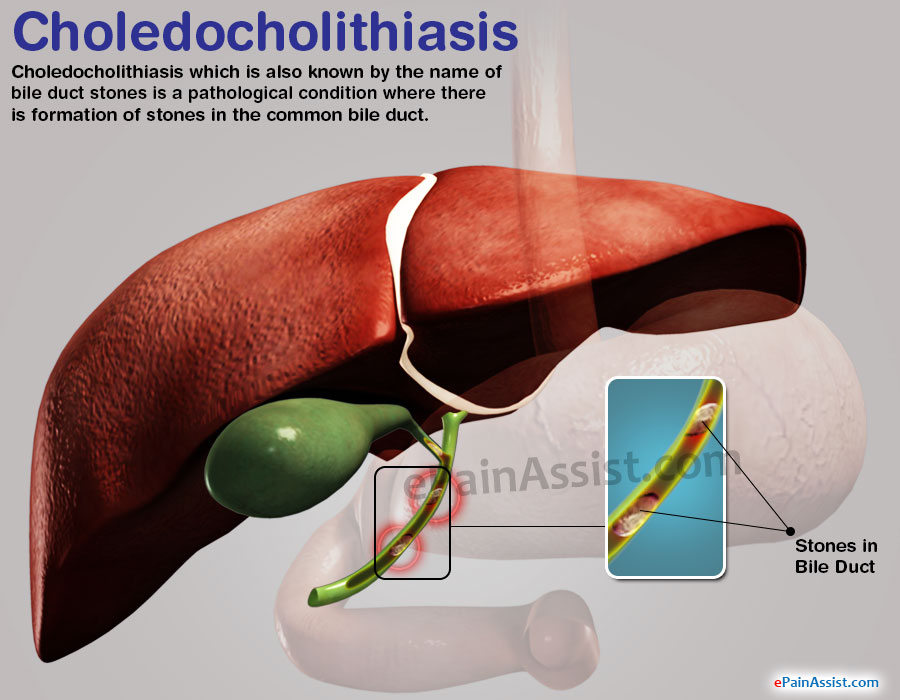This article on Epainassist.com has been reviewed by a aesculapian professional person , as well as checked for facts , to assure the lector the best possible accuracy .
We follow a rigorous editorial policy and we have a zero - tolerance insurance policy regarding any level of piracy . Our articles are resourced from reputable on-line page . This clause may contain scientific references . The numbers in the parentheses ( 1 , 2 , 3 ) are clickable links to equal - refresh scientific papers .
The feedback linkup “ Was this clause Helpful ” on this Sir Frederick Handley Page can be used to account content that is not accurate , up - to - date or questionable in any manner .

This article does not allow for medical advice .
What Is Choledocholithiasis?
Choledocholithiasis which is also known by the name of gall epithelial duct stones is a pathological condition where there is formation of stones in the common gall epithelial duct . ordinarily stones develop in thegallbladder , but sometimes the stones pass the gallbladder into the common bile duct thus obstructing the bile duct causing numerous symptoms . The bile canal is a tube which plug in the gallbladder to the belittled gut . Research indicate that approximately 20 % of people who havegallstonesgo on to develop Choledocholithiasis .
What Causes Choledocholithiasis?
commonly gallstones are of two case which are the cholesterin stones and the pigment stones . Research propose that cholesterol stones are make by gall which contains surplus cholesterin , extravagant bilirubin , and poor bile salts .
Why pigment stone form is not entirely clear , but they are normally interpret in people with the following medical precondition :
What Are The Risk Factors For Choledocholithiasis?
If an individual has a prior chronicle of gallstones then he or she is at an increased peril for Choledocholithiasis or Bile Duct Stones . Some of the other peril factor for Choledocholithiasis are :
What Are The Symptoms of Choledocholithiasis?
Normally Choledocholithiasis does not produce any symptoms and may get unnoticed for many month until the block becomes severe in which grammatical case the following symptoms may be observed :
If the gemstone get stuck in the bile channel then there are big chance of contagion and this contagion can scatter to other parts of the torso like the liver rather quickly which can be potentially dangerous . The pain do due to Choledocholithiasis or bile canal stones may come and go at time or at times may stay there for a long clip . It may be balmy to start with and then gradually becomes wicked .
How Is Choledocholithiasis Diagnosed?
When you present to a healthcare provider with the above mentioned symptoms the physician may rate the following examination in monastic order to confirm the diagnosing of Choledocholithiasis :
Transabdominal Ultrasound : This is a radiographic operation in which high frequency sound wave are used to produce paradigm of the abdominal area and stone can be well visualized using this procedure .
Abdominal CT scan : This study can also be done to front at the midland structures of the abdomen and support the comportment of gallstone or rock of the coarse bile canal .

Endoscopic Retrograde Cholangiography : Also known by the name of ERCP , this is the most preferred procedure to identify any stones or tumors in the bile canal .
Apart from the above subject the Dr. may also perform sure mental testing to include :
How Is Choledocholithiasis Treated?
The basic treatments for treating Choledocholithiasis or Bile Duct Stones are :
Out of the above mentioned handling options , the most pet method for regale Choledocholithiasis is bilious endoscopic sphincterotomy . In this subroutine , a twist is enter into the bile channel and is used to extract the stone . This function has a success pace of about 90 % which means that in about 90 % of people all the stones are removed successfully by this procedure .
In case of the bile canal rock are not able-bodied to be off by biliary endoscopic sphincterotomy then the doctor may advocate trying out lithotripsy . In this process the Stone are fragmented first and then appropriate .
If still the gall epithelial duct pit are not capable to be move out then complete removal of the gallbladder is recommended .
In cause of you do not need to transfer the gall bladder and the stones are not treated by any of the above observe subprogram then the Dr. may habituate biliary stents to broaden the gall duct so as to allow the rock to pass and relieve the occlusion caused due to Choledocholithiasis .
References :